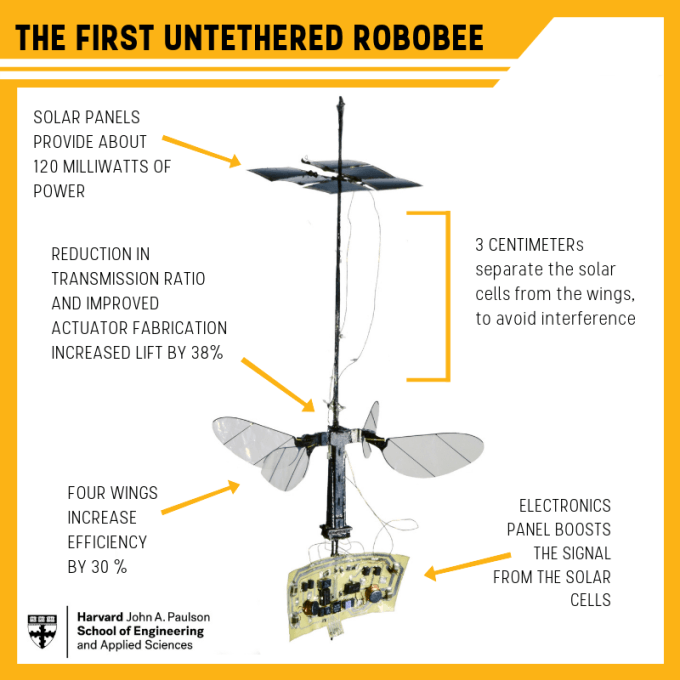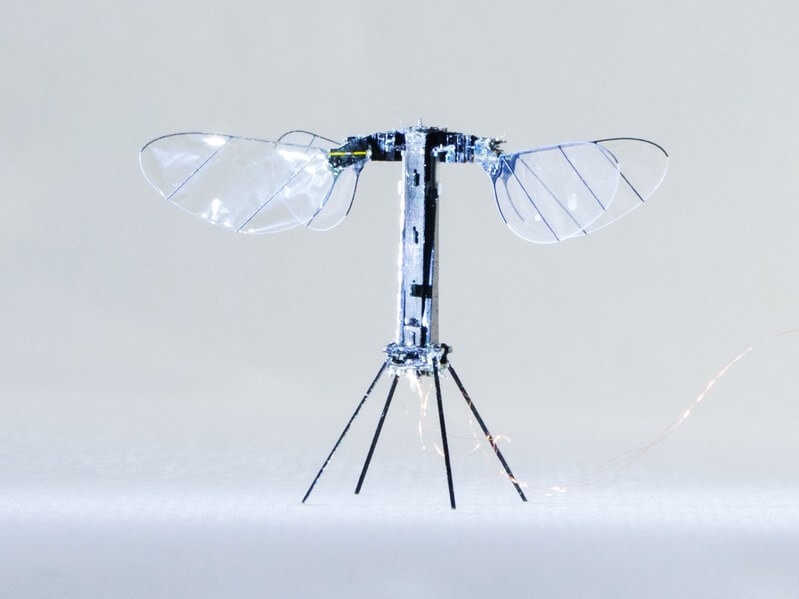In brief: Harvard's tiny Robobee flying machine has undergone several improvements over the years, but the latest upgrade is probably its most significant: it can now fly without being tethered to a power source, thanks to the addition of some solar cells and an extra pair of wings.
We first heard about Robobee back in 2013. The latest iteration of the device is called the Robobee X-Wing, which boasts several new features.
Weighing just one-quarter the weight of a paper clip, RoboBee X-Wing is the lightest aerial vehicle to manage sustained untethered flight. Rather than carrying a battery, which would make it too heavy, the mechanical insect gets its power from six small solar cells attached to a rod above its wings---a design that keeps them out of the wings' airflow. These provide 5 volts of electricity and a small transformer turns this into 200 volts, which drives the actuators that cause the wings to flap.

Right now, the Robobee X-Wing requires light three times brighter than the sun to operate. Researchers placed powerful lamps above it in lab tests, and it could still only fly for a couple of seconds at most, so it's not ready for any outdoor missions just yet. IEESpectrum writes that researchers are working on a version 25 percent bigger that would need light 1.5 times brighter than the sun to work.
Eventually, it's hoped the Robobee X-Wing will get to the stage where it can work autonomously and without requiring so much sunlight, at which point it could be used for environmental exploration, search and rescue missions, and more.
